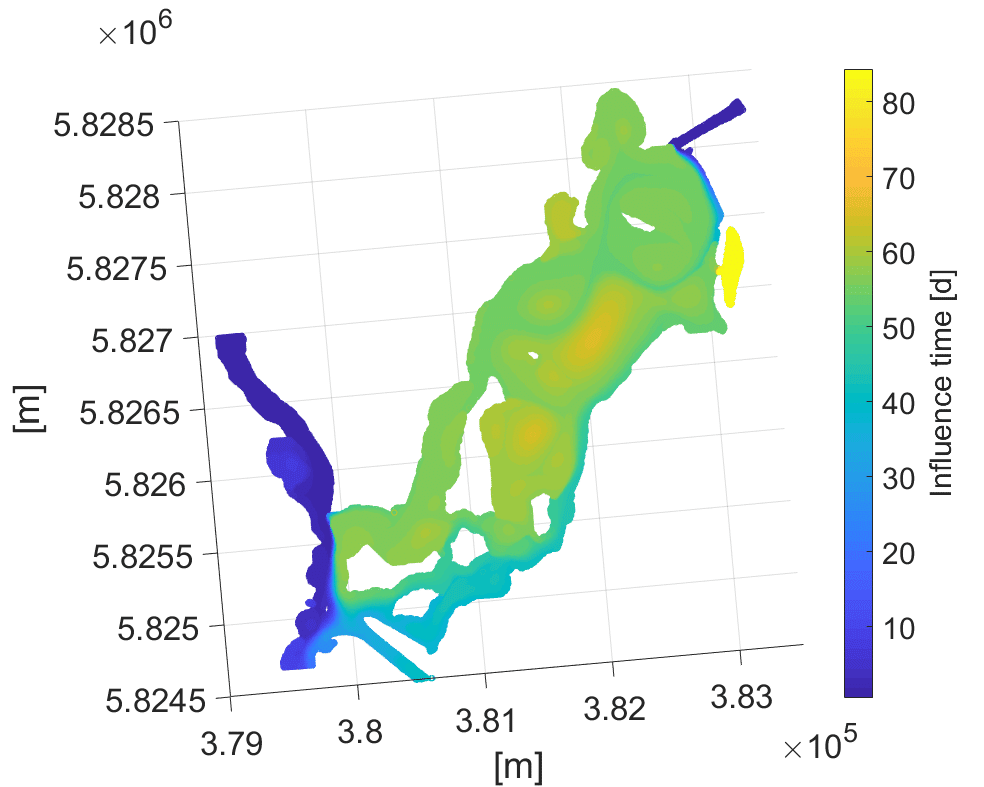
Simulation of Water Exchange Times for Contaminant Risk Assessment in an Urban Lake Using a Depth-averaged 2D Model
2Chair of Water Resources Management and Modeling of Hydrosystems, Technische Universität Berlin
3Center for Limnology, University of Wisconsin-Madison
Lake Tegel (V = 28.5 Mio. m³, A = 4.4 km², max. depth 16 m, mean depth 6.6 m) in Berlin, Germany, is an urban lake heavily influenced by discharges of treated wastewaters, bank filtration, a phosphorus elimination plant, a river inflow with high nutrient loadings as well as surface runoffs from the urban catchment after precipitation events. Previous studies stated that the wind direction is severely affecting circulation patterns in the lake. Water exchange times, such as the lake hydraulic retention times and the influence times, are important diagnostic estimators to predict the impact of contaminants (and/or nutrients) on the lake ecosystem. Especially after short-duration heavy rainfall events the lake trophic structure is significantly modified, e.g. due to the formation of phytoplankton blooms. The potential water exchange times depending on flow dynamics and wind direction are crucial information for managers and stakeholders for controlling water quality.
To evaluate Lake Tegel’s water exchange times after short-duration heavy rainfall events, we set up a depth-averaged 2D flow and transport model using the open TELEMAC-MASCARET system. The model was calibrated by the bottom friction coefficient to fit measured chloride concentrations at the deepest site for a period from 2000 until 2014. We investigated influence time distributions in dependence of different wind directions and mean inflow discharges. Further, we calculated influence time distributions as well as the lake hydraulic retention times after short-duration heavy rainfall events by simulating scenarios that mimicked a real event, which occurred in summer 2017. Here, the discharges of the phosphorus elimination plant were modified: (1) an overflow scenario in which the plant’s capacity was reached; (2) a hypothetical bypass scenario in which additional inflows are bypassed from the upstream plant to the lake’s outflow; and (3) a hypothetical overcapacity scenario in which additional water masses are discharged into Lake Tegel.
The influence time distributions highlighted that although intense river mixing was occurring under east-wind, the interaction times between potential contaminants and the ecosystem were short. Further, the efficiency of increasing external discharges to reduce water exchange times is limited by the wind conditions. Nonetheless, an adaptive management of the inflows can surpass long-term interactions between potential contaminants and the ecosystem.

Figure 1 Influence time distribution in Lake Tegel under constant west-wind
Powered by Eventact EMS